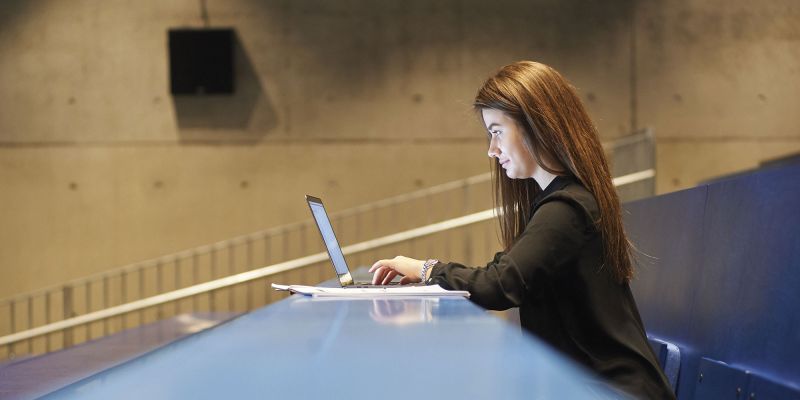In November 2024, the Sound Image Research Centre held its ninth instalment of the SOUND/IMAGE Festival at Bathway Theatre. The centre was successfully awarded a prestigious “International Travel Bursary for Underrepresented Regions – In FULL” from the AHRC to fund five individuals from underrepresented regions across the world to showcase their work at the festival.
The previous year’s call received over four hundred paper and artistic submissions, from which a diverse and complementary programme of talks, screenings, loudspeaker orchestra concerts, and workshops was selected. SOUND/IMAGE 2024 brought together a range of perspectives to stimulate discussion, debate, and reveal new insights into questions of mediated space and immersion across and between fields, including music, film, architecture, performance, and digital arts.
The successful awardees were Edmar Soria (Mexico), Gaurav Singh (India), Rodrigo Romero (Chile), Sara Hamdy (Egypt), and Wei Yang (China).
Edmar Soria, one of the awardees, shared their experience:
Edmar Soria
Outcomes of My Visit
Attending the SOUND/IMAGE 2024 Festival at the University of Greenwich was a profoundly enriching experience that allowed me to engage deeply with cutting-edge research and creative practices in the field of sound and image and to meet a lot of incredible artists and creative researchers. This visit allowed me to experience some state of the art creative productions; from acousmatic music to multimedia installations and I was able to learn a lot directly from such artists and researchers themselves.
My participation included presenting the talk Deep Learning Techniques for Spatial Sound Localization, where I explored recent advancements in leveraging deep learning for spatial sound localization, delving into the challenges of traditional spatial sound localization techniques, such as beamforming and subspace methods, and highlighted how deep learning offers innovative solutions by learning complex, non-linear mappings from large datasets. The diverse audience provided thought-provoking feedback and posed insightful questions that have inspired new avenues for both technical and aesthetic exploration.
My artistic contributions to the festival included the presentation of my acousmatic composition, Post Anthropocene Record No. X.01, during Concert 4, and the live performance of my audiovisual work Distant Motility during Concert 6. These performances allowed me to share my exploration of speculative machine consciousness and immersive sonic narratives. The feedback and connections made through these presentations have not only refined my practice but also reaffirmed the importance of these themes in contemporary sound art and through the feedback I received I have been able to think some new aesthetic perspectives related to such work.
Finally, attending, all concerts and talks from all artists in the program, allowed me to learn several new technological artistic frameworks and to conceive some new ways of aesthetic narrative techniques through several and diverse perspectives from several locations of the world, which was fascinating.
2. Engaging with UK-Based Research at the Festival
One of the most impactful aspects of the festival was the opportunity to engage with the vibrant UK-based research community. The festival showcased a wide array of innovative projects and ideas, underscoring the intersection of technology, sound, and aesthetics. The talks and performances were carefully curated, fostering a dialogue between researchers, artists, and audiences.
Through the attendance of the lectures and personal interaction with the hosts and professors from Greenwich University I could delve myself into the research areas of this awesome Department and being able to know about the high quality research production all the members do for this behalf. This Department is with no doubt, a solid, well established and internationally relevant research group.
The festival’s organization also stood out for its professionalism and attention to detail. The thoughtful scheduling of events, clear communication with participants, and warm hospitality created an environment conducive to meaningful exchanges and artistic exploration. The organizers’ commitment to fostering a space for both emerging and established voices in sound and image research was evident throughout the program.
3. Future Potential Outcomes and Next Steps
The SOUND/IMAGE 2024 Festival has opened up numerous pathways for future collaborations and research endeavors. Building on the insights and connections made during the festival, I plan to:
● Deepen Research: Expand my work on spatial sound localization by incorporating the feedback and ideas shared during my talk. This includes exploring the integration of visual information into deep learning models for sound localization and investigating its implications for artistic practices such as acousmatic composition based on reverse engineering of deep learning spatial sound analysis.
● Collaborate Across Disciplines: Initiate partnerships and communication with researchers and artists I met at the festival for potential academic/artisti collaboration
● Enhance Artistic Practice: Inspired by several different works, I aim to further develop immersive, cross-modal sound experiences in my artistic practice, including live electronics with AI Computer Vision real time control and live data visualization.
● Engage with Future Festivals: The festival has reaffirmed my commitment to actively participate in future editions of SOUND/IMAGE and other similar events which I would love to do if I could be invited again. This platform is invaluable with no doubt, for exchanging ideas, showcasing work, and engaging with a dynamic community of sound and image practitioners.
Reflections on the Festival's Success
The SOUND/IMAGE 2024 Festival was an international resounding success, not only for its rich and diverse worldly program but also for its seamless organization. The balance between research presentations, artistic performances, and informal networking opportunities created an inclusive and inspiring atmosphere. The festival’s ability to bridge academia and artistic practice is a testament to the dedication, professionalism and vision of its organizers. This event has solidified its reputation as a critical hub for exploring the evolving relationship between sound, image, and technology, and I look forward to seeing how it continues to grow and innovate in the years to come.
In conclusion, my experience at the SOUND/IMAGE 2024 Festival has been transformative, providing a wealth of inspiration, connections, and ideas that will shape the next stages of my research and artistic journey.

